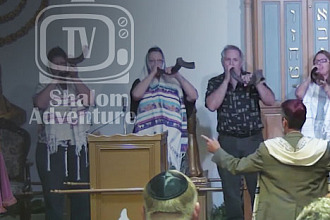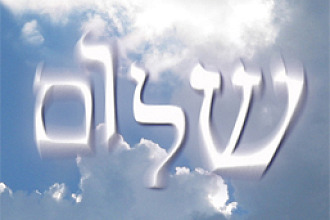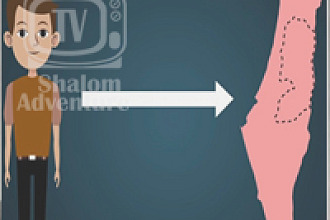Inaccurate language can lead to all sorts of bad results.
Among the silliest and most destructive myths derived from bad use of language is the notion that Zionism is some brand-spanking-new concept that was a gift to the Jews since some people did something to them in WWII.
This is nonsense.
Others think Zionism is some relatively new idea from the 19th century, generated by Theodor Herzl.
This is also nonsense.
Zionism advocates for the establishment and maintenance of a Jewish nation in Eretz Yisrael (the Land of Israel) as the national homeland of the Jewish people.
It is both political and religious.
Zion is mentioned in the Tanach (Torah, Nevi’im, Ketuvim) in 2 Samuel 5:7, where it is described as a Jebusite fortress that was conquered by King David. David renamed the fortress the City of David, and it became the capital of the United Kingdom of Israel. The Book of Samuel was written sometime between the 10th and 8th centuries BCE, during the time of the Divided Monarchy.
Over time, the name Zion came to be used more broadly to refer to the city of Jerusalem, as a whole, and to the Land of Israel itself.
Zion is mentioned many other times in the Tanach, showing that Zion was a place of great importance to the Israelites/Jews, both physically and spiritually. It was the center of government, religion, and culture.
Zionism is ancient.
Jews began praying for the return to Zion in the 6th century BCE, after the Babylonian conquest of the Kingdom of Judah. The Babylonians deported the Jewish people to Babylon, where they remained in exile for over 70 years.
Later in the 6th century BCE, the Persian king Cyrus the Great conquered Babylon and allowed the Jews to return to Zion. The Jews rebuilt the Temple in Jerusalem and resumed their religious practices. The Jews remained under Persian rule until the 4th century BCE, when Alexander the Great conquered the Persian Empire.
After Alexander’s death, the Jews were ruled by a succession of Greek and Roman empires. The Jews rebelled against Roman rule several times. The Romans finally crushed the Bar Kokhba revolt in 135 C.E. It was in 135 C.E. that Emperor Hadrian renamed Judea (the Kingdom of Judah) to Syria Palaestina to punish the rebellious Jews and suppress Jewish nationalism, erase its Jewish identity, and make it clear that the Romans were in control.
Zionism appears in the many ancient Jewish prayers that call for the return to Zion.
Some of the best known include:
- Alenu: This prayer is recited at the end of every three daily prayer services. It expresses the Jewish belief in the ultimate triumph of God’s kingdom and the ingathering of the Jewish people from exile. The prayer includes the following line: “And gather us together from the four corners of the earth, to inherit our land.” (The Alenu prayer is thought to date back to the 1st century C.E.)
- The Amidah: The Amidah is the central prayer of the Jewish service, and it is recited three times a day. Here is a line from the Amidah that calls for the return to Zion: “Rebuild Jerusalem, the holy city, speedily in our days.” (The Amidah is thought to date back to the 1st century C.E. The Amidah includes a blessing for the rebuilding of Jerusalem and the redemption of Israel.)
- Adon Olam: This prayer is recited at the end of many Jewish services. It is a meditation on God’s eternity and the Jewish people’s hope for the future. The prayer includes the following line: “And rebuild the House of Your Holiness in Jerusalem, our city, speedily in our days.” (The Adon Olam prayer is thought to have been written in the 11th or 12th century C.E.)
- Lecha Dodi: This hymn is sung on the Sabbath eve to welcome the Shabbat. It is a poetic expression of the Jewish people’s love for Jerusalem and their hope for its restoration. The hymn includes the following line: “We will go to Jerusalem, the city that is built, and may You rebuild it speedily in our days.” (The Lecha Dodi hymn is thought to have been written in the 16th or 17th century C.E.)
- Yigdal: This hymn is sung on the Sabbath morning to praise God’s greatness and goodness. It includes the following line: “And may You bring back the exiles to Jerusalem, Your city, quickly, in our days.” (The Yigdal hymn is thought to have been written in the 12th or 13th century C.E.)
These prayers reflect the deep and ancient connection that the Jewish people have to Zion and a call for the return to Zion — i.e., Zionism. The Jewish people have always prayed for their return to their homeland, and these prayers continue to be recited today.
The fact that these prayers were written and recited at different times in Jewish history reflects the enduring hope of the Jewish people for their return to Zion. Even during times of exile and persecution, the Jewish people never gave up on their Zionism.
Yeshua was asked when the Jews would be returned to Zion/Israel. In the Gospel of Matthew, 24:3, the disciples ask Yeshua, “Tell us, when will these things be? And what will be the sign of your coming and of the end of the age?”
Yeshua responds by giving a long and detailed prophecy about the future, including the destruction of the Temple in Jerusalem and the return of the Jews to their homeland. He says, “And they will gather together his elect from the four winds, from one end of heaven to the other” (Matthew. 24:31).
(As a bonus, the years of Yeshua's life are generally believed to be between 6 and 4 BCE and between 30 and 33 C.E. His life entirely antedates the name change from Judaea to Syria Palaestina, so Yeshua could never have been “Palestinian.”)
The term “Zionism” was coined by Nathan Birnbaum in the late 19th century. The movement’s roots can be traced back to the Babylonian Exile in the 6th century BCE.
Theodor Herzl did not have a role in creating the word “Zionism.” Herzl was instrumental in popularizing the term and giving it the political meaning that it has today. He wrote extensively about Zionism in his articles and speeches, and he used the term “Zionism” to describe the movement’s ideology and aspirations. It is largely due to his efforts that the term “Zionism” is now used to refer to the Jewish national movement.
Though some may make a distinction between Zionism and Modern Zionism (19th century onward), the fact is, it is all part of a continuum starting ~3 millennia ago and regards the Land of Israel, the Jewish National Homeland, from ~4 millennia ago.
Zionism is millennia old.


























